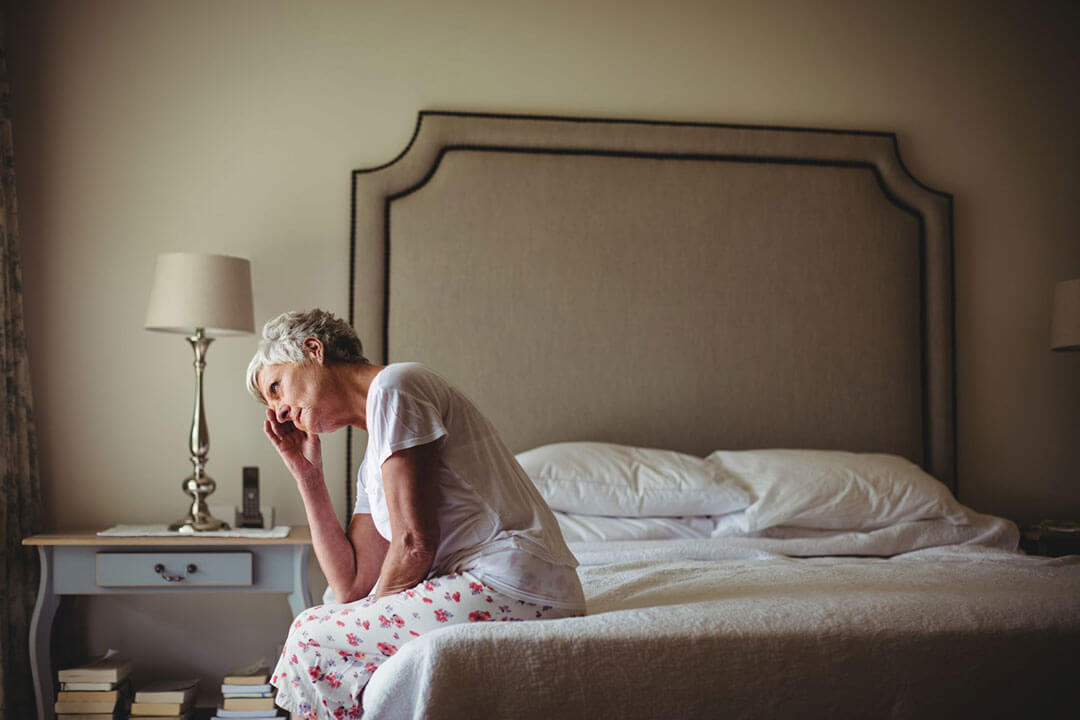Do you or a loved one have restless legs syndrome? If you’ve ever felt the uncontrollable urge to move or kick your legs during the night, or have felt a tingly, pins-and-needles sensation in your legs, then you probably have restless legs syndrome (RLS). Restless leg syndrome and sleep are often mentioned together, because although it doesn’t happen during sleep it occurs or is worse when resting during bedtime and can make it difficult to fall asleep.
Concerns about sleep are one of the main reasons people seek medical care for this condition, likely it’s the same for you. As many as 10 percent of American adults may be experiencing restless legs syndrome. Both men and women are affected, although more women than men. It increases with age and is most severe for middle aged and older populations.
Although it isn’t considered a particularly serious condition, restless leg syndrome can indicate a more serious, undiagnosed underlying condition that can be harmful to your health.
If you’re experiencing moderate to severe RLS symptoms, which is typically bothersome enough to require treatment, it’s caused by another disorder. When caused by another disorder it’s considered secondary RLS. Your symptoms will usually resolve or improve markedly when the underlying disorder is treated. In fact, many people with the condition also report at least one additional sleep disorder, like periodic limb movement disorder, insomnia, or obstructive sleep apnea (OSA).
Thankfully, the diagnosis and management of restless leg syndrome is relatively easy with well proven protocols. We’re sharing steps you can take to make sure that your restless legs don’t ruin your night.
But before we take a look at how to best treat or address RLS, let’s take a look at the condition itself.
What is Restless Legs Syndrome?
Restless Legs Syndrome, also known as RLS or Willis Ekbom Disease, is a neurological disorder where an uncomfortable sensation— such as itching, prickling, or throbbing— in your legs compels you to move or kick them for relief. With RLS, you’re compelled to keep your legs in constant motion to relieve or prevent these sensations. (Hence “restless” legs.)
Most RLS sufferers also have a condition known as Periodic Limb Movement Disorder (PLMD). Similar to RLS, PLMD patients have the uncontrollable urge to move their limbs, but without that creeping feeling that RLS patients experience. These movements happen during sleep and therefore disrupt sleep, which can lead to fatigue and daytime sleepiness.
What Are the Symptoms of Restless Legs Syndrome?
RLS symptoms can include:
- The familiar itching/creeping/prickling feeling that compels you to move your legs, or sometimes even your chest or head
- Leg cramps or pain
- Legs feeling twitchy
- Urge to move
- Difficulty falling asleep due to constant movement
RLS severity can vary between being uncomfortable and irritating typically, or even painful at their most severe. Frequent or severe symptoms can cause sleep disturbances, insomnia, and hypersomnia, or daytime sleepiness.
How is Restless Legs Syndrome Diagnosed?
A sleep test or sleep study isn’t needed to diagnose restless leg syndrome, because restless legs don’t occur during sleep, it happens before you go to sleep.
When you’re diagnosed with RLS it’s based on a clinical evaluation. Testing such as electromyography and polysomnography is rarely, if ever, necessary.
To support diagnosis, the International RLS Study Group established the four essential criteria for the diagnosis of RLS (the URGE criteria).
- Urge to move the limbs, usually accompanied by an unpleasant or uncomfortable sensation in the limbs
- Rest or inactivity precipitates or worsens the symptoms
- Getting up or moving improves the sensation
- Evening or nighttime appearance or worsening of the symptoms.
It is worth noting that a number of other conditions clinically mimic some of the features of RLS, most notably:
- leg cramps
- arthritis or other orthopedic/rheumatologic pain disorders
- neuropathy/radiculopathy
- anxiety/nervousness
- neuroleptic-induced akathisia
What Causes RLS?
Restless legs syndrome also has a genetic component, and can be found in families where symptom onset occurs before age 40. Your risk is approximately three to six times greater if you have a first-degree relative with RLS.
Cases of restless legs syndrome can be divided into two groups, which are classified by what causes the disorder.
Primary RLS occurs independent of other disorders, when your RLS symptoms don’t have any specific cause. Secondary Restless Legs Syndrome, or secondary RLS, develops as a result of another disorder or underlying condition, including:
- Iron deficiency— which can become iron deficiency anemia if left untreated
- Pregnancy— although these symptoms normally go away after childbirth
- Parkinson’s Disease
- Kidney disease or kidney failure
- Peripheral neuropathy
Usage of certain medications, like some antihistamines, anti-nausea drugs, and some antidepressants can also cause RLS symptoms. Recreational substances like caffeine, alcohol, and nicotine can trigger symptoms too.
Related: Alcohol and Sleep May Not Mix as Well as You Think
How Does Restless Legs Syndrome Affect Your Sleep?
The unpleasant sensation in your legs that drives you to move them can cause enough problems while you’re resting during the day. However, it’s when you’re trying to sleep that this compulsion becomes most problematic as it can delay the onset of sleep.
As mentioned earlier, most people with RLS also have a condition called periodic limb movement disorder or PLMD. These are twitching or repetitive flexing movements that happen while you’re asleep. It doesn’t include tingling or uncomfortable sensations like RLS does, but PLMD can cause you to wake or disrupt your sleep even if it doesn’t cause you to wake up. This ultimately leads to feeling unrested, exhaustion, and sleep deprivation.
Women with sleep apnea are also more likely to report RLS as one of their symptoms, as well as insomnia and nightmares. When combined with other serious conditions, it becomes much more important to treat your symptoms. Because treating your RLS may not only solve that problem, but it could also help address any underlying issues you may have.
How to Treat Restless Legs Syndrome
Restless Legs Syndrome can create a lot of potential health problems, but it’s also easily treatable. If you or a loved one are struggling with RLS, consider the following treatment options.
1. Medication or Supplementation
Prescription drugs are a popular and effective treatment for RLS patients. A few of these include:
- Gabapentin enacarbil
- Dopamine agonist medications like Pramipexole— a prescription which is also used to treat Parkinson’s Disease
- Anti-seizure medications
- Iron supplements, to treat deficiencies that may be triggering RLS symptoms
According to Dr. William Noah, “In the majority of patients we’re finding RLS is caused by a relative deficiency of iron in the brain. A large percentage suffering from restless legs are because of a decreased ability to transfer iron from the blood into the brain. We treat most of our patients with iron.”
At Sleep Centers of Middle Tennessee, we recommend that our patients with RLS symptoms get blood work including hemoglobin, iron studies, BUN/creatinine, and particularly, a serum ferritin level. This is because relative CNS (central nervous system) iron deficiency, even in the presence of adequate peripheral iron stores, has been shown to make RLS symptoms worse. It’s also been shown that iron supplementation can improve RLS symptoms.
It’s important to note that normal ferritin levels by laboratory standards (10-322 ng/ml) is not necessarily adequate for patients with RLS.
Here are recommendations we offer patients:
- If your ferritin level is <50-75 ng/ml you should start ferrous sulfate 325 mg along with vitamin C 200 mg BID on an empty stomach. You can do this with your primary care provider.
- Repeat ferritin testing after 3 months. Stop supplementing with iron if your symptoms have resolved or if the ferritin level is greater than 75 ng/ml. If neither, then continue iron therapy another 3 months and repeat the ferritin level.
- Do not continue iron long term without monitoring ferritin levels. Hemochromatosis can occur with long term iron administration.
2. Reduce Caffeine, Alcohol, or Nicotine Intake
There are also lifestyle changes you can implement that may help relieve restless legs syndrome symptoms.
Reducing or eliminating caffeine, nicotine, or alcohol is advised. The use of alcohol also contributes to sleep disorders associated with restless leg syndrome, and can make RLS symptoms worse.
If you’re a smoker, nicotine is another trigger for restless legs syndrome. Like caffeine, nicotine is a stimulant, which can also prevent you from falling asleep or staying asleep at night.
3. Get Plenty of Exercise
Regular moderate exercise can help treat so many health problems— RLS included! One study of RLS patients found that between a non-exercising control group and an exercise group, the latter had a significant improvement in their symptoms compared to the control group.
A little movement goes a long way in treating your symptoms, so you can exercise at your fitness level while still reaping all those great health benefits.
Try exercising for 30 to 60 minutes each day, and exercise in the morning to start your day off strong. Exercising too late in the day can delay sleep onset, and may contribute to overheating while you’re trying to sleep.
When to Consult an Expert
Positive lifestyle changes can have a beneficial effect on your RLS, but if your symptoms are caused by iron deficiency, complications with your current medication, or another sleep disorder, those changes likely won’t be enough. If that’s the case, you should seek a professional to discuss your concerns, undergo testing, and potentially diagnosing and treating an underlying sleep disorder as well to fully recover.
If you believe undiagnosed sleep apnea is a contributing factor, getting a sleep test is a good first step. You can also check out our sleep quiz to help determine your risk before scheduling an initial appointment.
Remember, restless legs syndrome shouldn’t keep you up at night. Contact us at the Sleep Centers of Middle Tennessee today to schedule a consultation and get back to the peaceful rest you deserve.
References
Allen RP, Picchietti D, Hening WA, et al. Restless legs syndrome: diagnostic criteria, special considerations and epidemiology. A report from the restless legs syndrome diagnosis and epidemiology workshop at the National Institutes of Health. Sleep Med. 2003;4:101-119.
“Restless Legs Syndrome Fact Sheet.” National Institute of Neurological Disorders and Stroke, U.S. Department of Health and Human Services, www.ninds.nih.gov/disorders/patient-caregiver-education/fact-sheets/restless-legs-syndrome-fact-sheet.
“Restless Legs Syndrome Fact Sheet.” National Institute of Neurological Disorders and Stroke, U.S. Department of Health and Human Services, www.ninds.nih.gov/disorders/patient-caregiver-education/fact-sheets/restless-legs-syndrome-fact-sheet.
Wang J, O’Reilly B, Venkataraman R, Mysliwiec V, Mysliwiec A. Efficacy of oral iron in patients with restless legs syndrome and a low-normal ferritin: a randomized double-blind, placebo- controlled study. Sleep Med 2009;10:973-975.
O’Keefe S, Gavin K, Lavan JN. Iron status and restless legs syndrome in the elderly. Age Aging. 1994;23:200-3.

